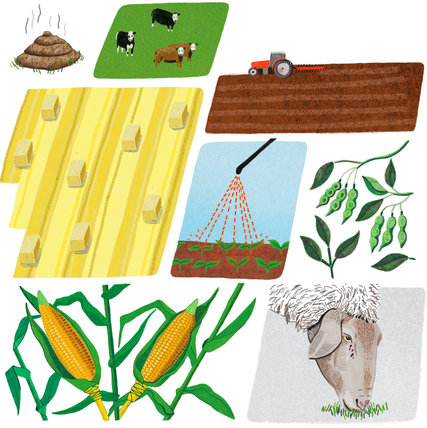“A Simple Fix for Farming”
Mark Bittman writes about an important but ignored new agricultural study in the NYT:
IT’S becoming clear that we can grow all the food we need, and profitably, with far fewer chemicals. And I’m not talking about imposing some utopian vision of small organic farms on the world. Conventional agriculture can shed much of its chemical use — if it wants to.
This was hammered home once again in what may be the most important agricultural study this year, although it has been largely ignored by the media, two of the leading science journals and even one of the study’s sponsors, the often hapless Department of Agriculture.
The study was done on land owned by Iowa State University called the Marsden Farm. On 22 acres of it, beginning in 2003, researchers set up three plots: one replicated the typical Midwestern cycle of planting corn one year and then soybeans the next, along with its routine mix of chemicals. On another, they planted a three-year cycle that included oats; the third plot added a four-year cycle and alfalfa. The longer rotations also integrated the raising of livestock, whose manure was used as fertilizer.
The results were stunning: The longer rotations produced better yields of both corn and soy, reduced the need for nitrogen fertilizer and herbicides by up to 88 percent, reduced the amounts of toxins in groundwater 200-fold and didn’t reduce profits by a single cent.
In short, there was only upside — and no downside at all — associated with the longer rotations. There was an increase in labor costs, but remember that profits were stable. So this is a matter of paying people for their knowledge and smart work instead of paying chemical companies for poisons. And it’s a high-stakes game; according to the Environmental Protection Agency, about five billion pounds of pesticides are used each year in the United States.





